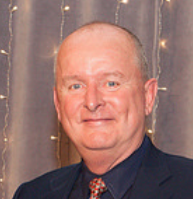Attaining a net zero energy footprint and going carbon neutral have become paramount goals for facility owners and operators in recent years. Whether you own or operate a residential building, a high-traffic visitor centre, an industrial site, or another facility, curbing your negative environmental impact goes a long way with today’s environmentally and socially conscious public.
As owners work on reopening buildings while the ground rules for safe operation during and after the pandemic are still being formulated, what are the smart strategies for pursuing net zero during these times of uncertainty?
At the 2021 virtual REMI Show on June 16, Paul Reinholz, Senior Operations Manager at Cadillac Fairview’s Simcoe Place and RBC Centre, and Ian Jarvis, Enerlife founder and president, discussed why optimizing air handling systems should be one core focus of attention. Necessary and suggested work includes comprehensive testing and monitoring; addressing airflow imbalances, excessive static pressure losses, and other maintenance issues; and mitigating equipment/controls deficiencies.
The distilled conclusion is that even outside of the current pandemic, well-functioning ventilation systems are vital to ensure the proper maintenance of a facility’s indoor environmental conditions and the safety and comfort of its occupants. Naturally, that need has intensified with the new and magnified demands created by COVID-19.
Toronto’s Simcoe Place and RBC Centre are shining examples. The former, an office and retail building, was one of the first buildings in Canada to receive ENERGY STAR Certification in 2018 and is also certified LEED Gold and BOMA Best Gold. It has achieved an energy reduction of 10.5 per cent since 2017, almost identical to RBC Centre’s 10.2 per cent reduction over the same time. The RBC Centre office tower, also ENERGY STAR approved, is certified LEED Platinum and BOMA Best Gold.
Jarvis noted that the most recent years of savings results in Simcoe Place is around $900,000, around 600 tonnes of reduction, and “a steady progression every year” in terms of improved overall energy savings.
Comfort as priority
As Reinholz explained, while there has been a lot of focus on energy improvements in recent years, the number one priority should not be the energy performance of the building itself but rather the comfort of the occupants.
However, facility owners and operators should know that they can do both.

Paul Reinholz
“A lot of people think we’ve found energy savings by turning off the air conditioning but that’s just not true,” Reinholz explained in the REMI Show session with Jarvis entitled Getting to Net Zero in the Age of COVID-19. “We’ve had a laser focus on tenant comfort down to a floor-by-floor level to ensure we’re not sacrificing tenant comfort to achieve our energy savings. That’s even more important now in the climate we’re in, with the quest for safety adding another dimension to the objectives.”
The key to the lock of improving energy performance and maximizing occupant comfort is air handling and ventilation. Reinholz noted that in today’s ever-changing environment, occupants’ main concerns with ventilation have progressed from mere temperature to safety and confidence in the health and infection control aspects. “The focus now is how we make these environments feel safe and comfortable while still keeping in mind environmental and energy considerations,” he acknowledged.
Heat recovery and air handling
Jarvis stressed that optimizing your TEDI score is a big step towards the goal of net zero. TEDI is the Thermal Energy Demand Intensity and measures the annual heat loss from a building’s envelope and ventilation after accounting for all passive heat gains and losses. Jarvis explained that in Ontario, it is now driven almost entirely by natural gas.
“All commercial buildings should have a target of around five equivalent kilowatt-hours per square foot of natural gas consumption,” he said. “Getting down to that number through sensible energy-efficiency measures sets the stage for the final step of heat recovery and then finally getting to net zero via carbon offsets or whatever mechanism you choose to follow.”
Air handling concerns like heat recovery are also paramount. Jarvis emphasized that “a central piece” of heat recovery is reclaiming all the internally generated heat. “Pulling back all of the heat generated by equipment will reduce the residual energy consumption… and ventilation systems are at the heart of this.”

Ian Jarvis
Jarvis went on to explain that the biggest single contributor to the savings that Cadillac Fairview has seen in these buildings to date has been getting air handling systems working correctly. “It’s remarkable to us how many building owners we find who have not had a comprehensive, whole-building air testing done in the last five years. That is fundamental for not just for managing energy but also in providing confidence to people returning to buildings like offices.”
Jarvis issued a self-described call-to-arms: “Air testing should be integral for everybody.” He also championed work like identifying and correcting static pressure losses as crucial. “That’s where a lot of the more than $1 million in incentives that have been collected across these two buildings come from.”
Getting started
Starting down the road of improved ventilation and air handling and, ultimately, improved energy performance and comfort and safety of occupants can be a daunting prospect for facility owners and operators. There may be conflicting priorities to negotiate, but Reinholz noted it requires support from leadership teams, a lot of effort and man-hours and investment, and most importantly, collaboration.
“We like to term it ‘collective genius’,” he said. “We meet regularly with building engineers, electricians, building operations teams, utility representatives to focus on the results and the process and that’s how we accomplished our success in this area.”
When it comes to how to get started, Reinholz and Jarvis have clear advice.
“Tackle that low-hanging fruit and you’ll see progress and that will narrow your focus as you go,” advised Reinholz. “Just get moving in the right direction and be prepared to adjust your plan as you move forward. Testing and balancing is probably the number one most impactful action you can take. Once you truly understand what you’re working with, you know the parameters you’re operating under and you can make those key decisions.”
The importance of that attainment of knowledge and understanding was echoed by Jarvis.
“You can’t manage what you’re not testing, particularly in large properties, without having a good understanding of all of the information that comes out of air testing. You have simply got to know what’s happening in air handling systems and you don’t know until you get them






